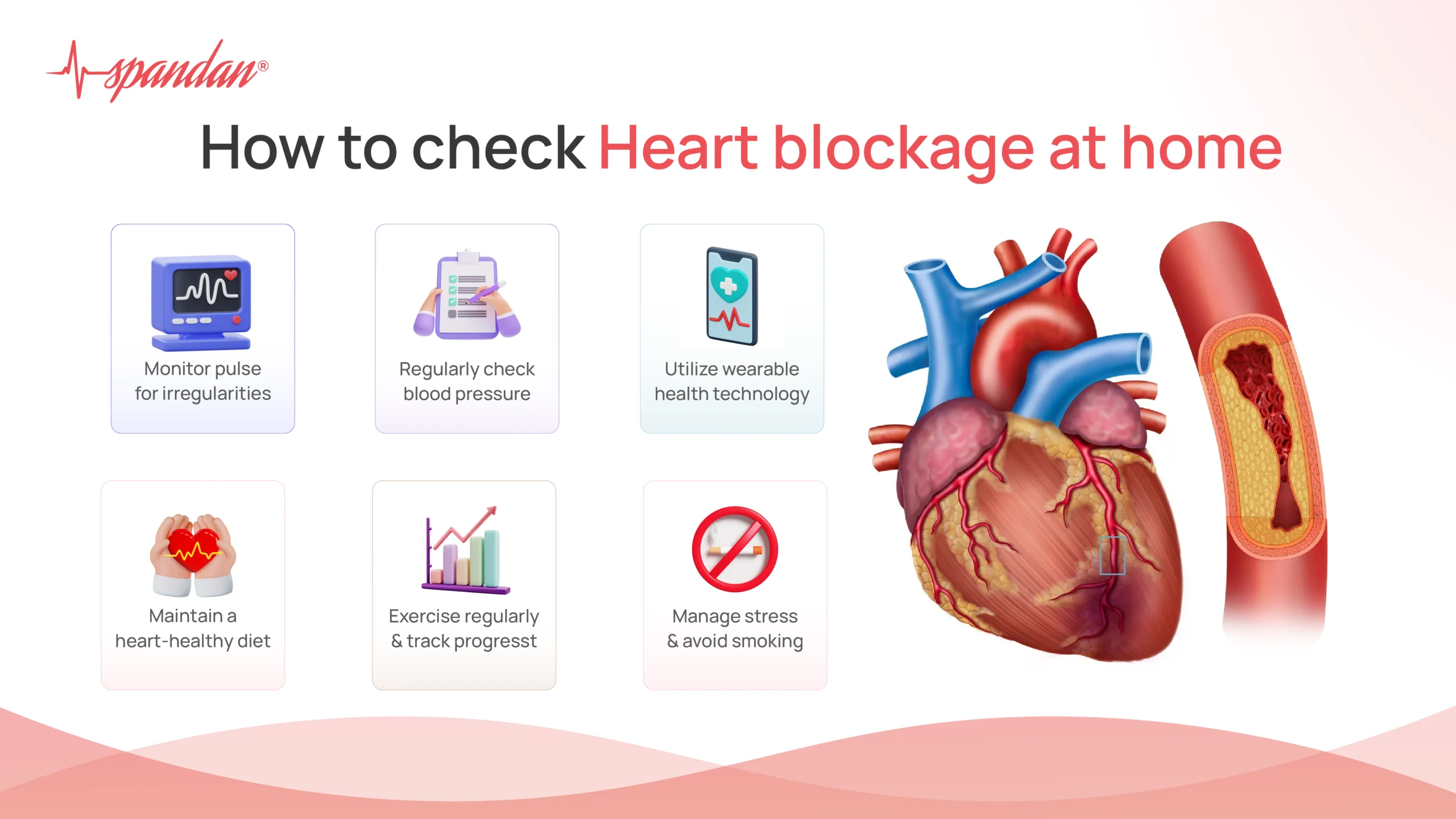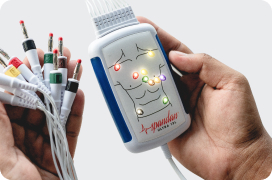
Author:- Mr. Ritesh Sharma
Everyone who is aware of heart disease must have wondered how to check heart blockage at home. Heart blockage, also known as coronary artery disease (CAD), is a serious condition that can lead to heart attacks and other cardiovascular issues. While a definitive diagnosis of heart blockage requires medical tests such as an electrocardiogram (ECG) showcasing an abnormal ECG, stress tests, or coronary angiography, there are several ways you can monitor your heart health at home. This blog will walk you through some steps and lifestyle practices that can help you stay aware of your heart health and recognize potential warning signs of heart blockage.
Understanding Heart Blockage
Before learning how to check heart blockage at home, let’s learn the exact meaning of a heart blockage. Heart blockage occurs when the coronary arteries, which supply blood to the heart muscle, become narrowed or blocked due to the buildup of plaque. Plaque consists of fat, cholesterol, and other substances. Over time, this buildup can reduce blood flow to the heart, leading to symptoms such as chest pain (angina), shortness of breath, heart palpitations and fatigue. In severe cases, it can cause a heart attack.
Recognizing Symptoms of Heart Blockage
1. Chest Pain or Discomfort
One of the most common symptoms of heart blockage is chest pain or discomfort, often described as a squeezing, pressure, or tightness in the chest. This pain can radiate to the shoulders, arms, neck, jaw, or back. If you experience such pain, especially during physical exertion or stress, it is crucial to take it seriously and seek medical attention.
2. Shortness of Breath
Difficulty breathing or shortness of breath, especially during physical activity or while lying down, can be a sign of heart blockage. This occurs because the heart is not pumping blood effectively, leading to fluid buildup in the lungs.
3. Fatigue
Unexplained fatigue or feeling unusually tired can indicate heart problems. If you find yourself easily fatigued or struggling with everyday activities that were previously manageable, it could be a warning sign.
4. Irregular Heartbeat
An irregular heartbeat, also known as cardiac arrhythmia, can be a symptom of heart blockage. If you notice your heart skipping beats, beating too fast, or pounding, it’s important to monitor this and consult with a healthcare professional.
5. Swelling in Legs, Ankles, or Feet
Swelling in the lower extremities can occur when the heart is not pumping blood effectively, leading to fluid retention. This symptom, known as edema, is often seen in heart failure but can also be associated with coronary artery disease.
How to check heart blockage at home?
1. Check Your Pulse
Monitoring your pulse can help you detect irregularities in your heart rate. To check your pulse:
- Find a quiet place to sit or lie down.
- Use the tips of your index and middle fingers to press lightly over the artery on your wrist (radial pulse) or the side of your neck (carotid pulse).
- Count the number of beats in 30 seconds and multiply by two to get your beats per minute (BPM).
A normal resting heart rate for adults ranges from 60 to 100 BPM. If your heart rate is consistently outside this range, or if you notice irregularities, consult with a healthcare provider.
2. Blood Pressure Monitoring
High blood pressure is a significant risk factor for heart disease. Regularly monitoring your blood pressure at home can help you keep track of your heart health. Automatic blood pressure monitors are widely available and easy to use. A normal blood pressure reading is typically around 120/80 mm Hg. Consistently high readings (140/90 mm Hg or above) should prompt a visit to your doctor.
3. Use of Wearable Technology
Wearable devices such as smartwatches can track various health metrics, including heart rate, physical activity, and sleep patterns. Some advanced models can even detect irregular heart rhythms. These devices provide valuable data that can help you and your healthcare provider monitor your heart health over time.
4. Maintain a Healthy Diet
Diet plays a crucial role in heart health. Eating a balanced diet rich in fruits, vegetables, whole grains, lean proteins, and healthy fats can help reduce the risk of heart disease. Avoiding excessive salt, sugar, and saturated fats is also important. Keeping a food diary can help you stay mindful of your eating habits and make healthier choices.
5. Exercise Regularly
Regular physical activity strengthens the heart and improves overall cardiovascular health. Aim for at least 150 minutes of moderate-intensity exercise or 75 minutes of vigorous-intensity exercise per week. Activities such as walking, cycling, swimming, and dancing are great for heart health. Use a fitness tracker or a journal to log your workouts and monitor your progress.
6. Quit Smoking and Limit Alcohol
Smoking is a major risk factor for heart disease. If you smoke, seek help to quit. Similarly, excessive alcohol consumption can harm your heart. Limit your alcohol intake to moderate levels – up to one drink per day for women and up to two drinks per day for men.
7. Stress Management
Chronic stress can negatively impact heart health. Practice stress-reducing techniques such as mindfulness meditation, deep breathing exercises, yoga, or hobbies that you enjoy. Maintaining a healthy work-life balance and getting adequate sleep are also essential for managing stress.
7. Stress Management
8. Know Your Family History
A family history of heart disease can increase your risk. Be aware of your family’s medical history and discuss it with your healthcare provider. This information can help you and your doctor develop a personalized plan to monitor and maintain your heart health.
In conclusion, the answer to question of how to check heart blockage at home is not simple. Keeping an eye on your heart health at home involves paying attention to your body, monitoring vital signs, and maintaining a heart-healthy lifestyle. While these practices can help you stay informed about your heart health, they are not a replacement for regular check-ups and professional medical evaluations. If you have any concerns about your heart health, do not hesitate to seek advice from a healthcare provider. Early detection and intervention are key to preventing serious heart conditions and maintaining a healthy, active life.





